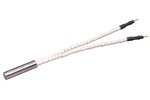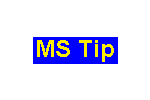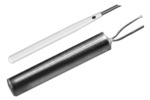- ▶
- Heaters/Source
- ▶
- Agilent Heaters and SensorsMass Spectrometry, Scientific Supplies & ManufacturingScientific Instrument Services 5973 Source Heater Tamper Resistant Allen Wrench 5973/5975 Quad Sensor 5985 Source Heater Assembly Agilent Interface Heater Assembly 5971 Interface Heater

- ▶
- LiteratureApplication Notes Adsorbent Resins Guide Mass Spec Tips SDS Sheets FAQ MS Calibration Compound Spectra Manuals MS Links/Labs/ Organizations MS Online Tools Flyers on Products/Services Scientific Supplies Catalog About Us NextAdvance Bullet Blender® Homogenizer Protocols Micro-Mesh® Literature Instrumentation Literature Agilent GC/MS Literature SIS News / E-Mail Newsletter NIST MS Database - Update Notifications

- ▶
- Mass Spec Tips1 - Freon for use in Mass Spectrometer Leak Checking 2 - Mass Spectrometer Probe Cooling 3 - Sample Vials for Direct Probes 4 - Selection of Vacuum Pump Oils for Lowest Mass Spec Background 5 - Determination Linkages in Biomolecules of Disulfide 6 - Transfer of H.P. ChemStation MS and GC Chromatograms from PC to MAC Computer 7 - Repairing Clogged Thermospray Probes 8 - Tuning a Finnigan 5100 to Meet BFB or DFTPP Criteria 9 - H.P. 5971 Transfer Line Tip for Direct Introduction of Capillary Column 10 - Troubleshooting Finnigan 5100 GC/MS Systems 11 - Leak Checking Mass Spectrometers 12 - Elimination of Memory Peaks and GC Background Noise 13 - SuperIncos Mapped Software Print Buffer Lockup 14 - Reduction of Peak Tailing 15 - Electron Multiplier Sensitivity 16 - INCOS Procedure for Calibrating on the Finnigan 4500 17 - Extending Electron Multiplier Life 18 - What techniques or methods do you use to determine if the electron multiplier 19- What techniques or methods do you use to detect vacuum leaks in your mass spectrometer 20 - Extending Lenear Range of the Mass Spec Article - Improving Sensitivity in the HP 5971 Mass Spectrometer - Part 1 and Part 2

- ▶
- 11 - Leak Checking Mass Spectrometers (This Page)
 Mass Spec Tips is a collection of tips relating to the operation
and service of mass spectrometers. Some of these Tips have been
reported in our newsletter, "The Mass Spec Source."
If you have a question relating to the operation or service of
mass spectrometers or would like to add your comments to the below
tip and would like to have it included in this forum, please contact us.
Input to this database of MS Tips is needed from our readers
to complete this section.
Mass Spec Tips is a collection of tips relating to the operation
and service of mass spectrometers. Some of these Tips have been
reported in our newsletter, "The Mass Spec Source."
If you have a question relating to the operation or service of
mass spectrometers or would like to add your comments to the below
tip and would like to have it included in this forum, please contact us.
Input to this database of MS Tips is needed from our readers
to complete this section.
Author: Richard A. Berger
Affiliation: Washington University
School of Medicine
The November, 1993 issue of THE MASS SPEC SOURCE contained a Mass Spec Tip concerning the use of Freon for leak checking Mass Spectrometers. We had used Freon-12 (Dichlorodifluoromethane) for this purpose until it was implicated in the ozone layer depletion phenomena. While Argon (MW 40) works well for leak detection in electron ionization (EI) mode, it does not work well in positive chemical ionization (PCI) mode using methane as the reagent gas since it is overshadowed by one of the methane complex ions (C3H5+, M/E 41). Argon does not show up at all in negative chemical ionization (NCI) mode.
We searched for some time for a gas which was:
1. Non-flammable, non-toxic, and non-reactive,
2. Inexpensive and readily available, and
3. could be used in EI, PCI, and NCI modes.
We found that sulfur hexafluoride (SF6 MW 146) satisfies most of these requirements. It is non-flammable and non-reactive; the TLV-TWA is 1000 ppm. It is available as a pure gas, usually shipped at its vapor pressure of 320 PSIG, or as an uncertified mixture with air, nitrogen, helium, or argon. Eighteen pounds of SF6 in a G size cylinder cost less than $200. This included the cost of a control valve and cart to move the cylinder (about 50 lbs gross weight) from machine to machine. In EI and methane PCI mode, the sulfur hexafluoride spectra has M/E 127 [M-F] + as its base peak. In NCI mode M/E 146 (M-) is the base peak.

